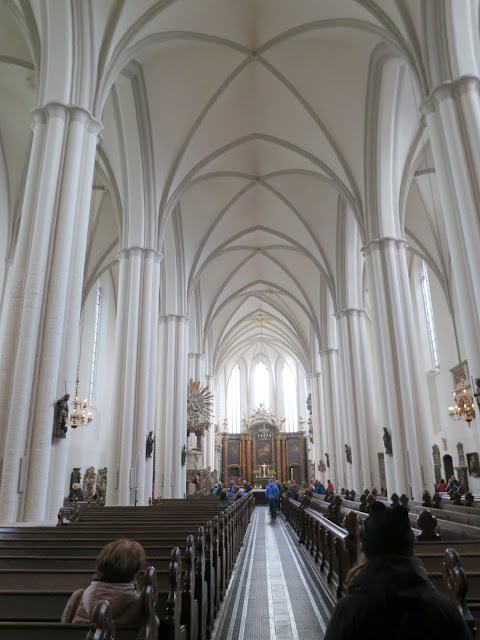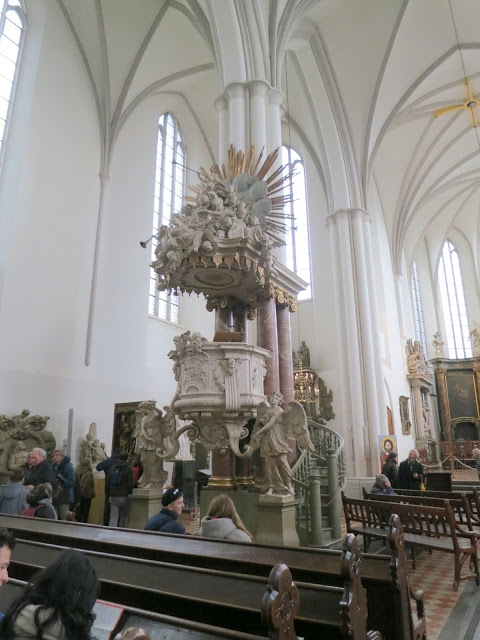Our first visit to Alexander Platz was after we left the Prenzlauer Berg District and walked down Prenzlauer Allee, the Fernsehturm our guide. The highest structure in Western Europe, the 368m-high transmitter was built during the isolationist 1960s, when the eastern part of the city was largely inaccessible to West Germans, and was intended as a highly visible symbol of the permanence of East Berlin and the GDR.
We came across an interesting sculpture on our left and soon enough we arrived at Alexander Platz. In the 18th century routes to all parts of Germany radiated from here, and a cattle and wool market stood on the site. Today it's a soulless place, full of shopping malls, a main train and U-Bahn and S-Bahn station, and lots of cafes and chain eateries and lots of traffic.
Two sculptures at the entrance of this shopping mall
An interesting landmark is Marienkirche. Once hemmed in by buildings, but now standing oddly alone in the shadow of the Fernsehturm, this is Berlin's oldest parish church. The Gothic stone and brick nave dates back to about 1270 but the tower is more recent having been added in 1466. This uncontrived combination of architectural styles somehow makes the Marienkirche one of Berlin's most appealing churches, its simplicity a reminder of the city's village origins.
We entered through the gorgeous main door
on our left is this small cross, erected by the citizens of Berlin and Coelln as penance to the pope, after a mob immolated a papal representative on a nearby marketplace. There are five holes in the cross and, so the story goes, medieval convicted criminals wishing to prove their innocence could do so by inserting the fingers of one hand into the holes simultaneously - not too many escaped punishment, though, as the feat is almost an anatomical impossibility.
the interior is magnificent in its simplicity.
Andreas Schlueter's pulpit, with its canopy of cherubs and backed by a cloud from which gilded sunrays radiate.
The marble altar with its huge triptych altarpiece
finally, the 18th century organ with gilded filigree and yet more cherubs, topped by a sunburst.


row after row of apartment buildings, built during the period of the GDR, I presume
this cheered us up for a minute of two
and also seeing this graffiti artist at work helped.
We came across this ruined church - I was so fed up and tired that I did not record what it's called
but found this sculpture of Christ interesting
as well as the installation inside the ruins.















No comments:
Post a Comment